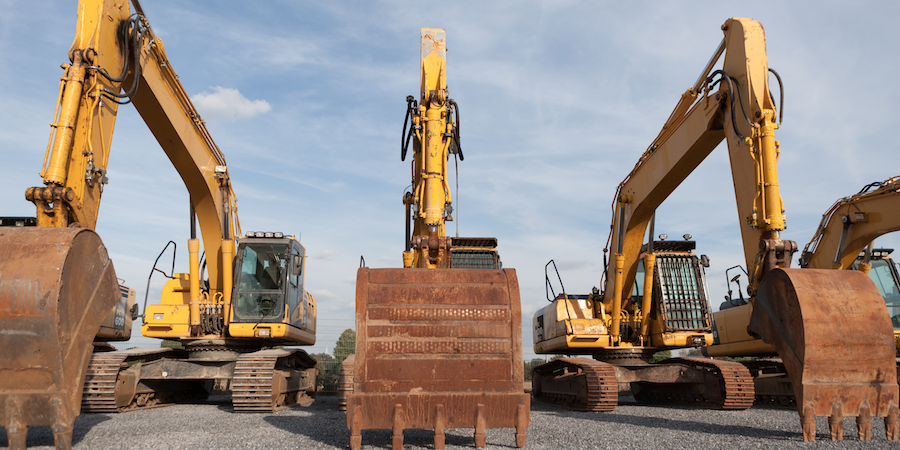“What If?”What if your construction company had the opportunity to secure K-12 construction work with the largest school district in the State of Texas?What if you had the right crews to bid, win, and execute the work?What if your craft workers could be safe, make a livable wage, and have the promise of several years of work on your construction jobs?If you are in the K-12 construction industry in Houston, your “what ifs” could become reality with the Houston Independent School District (HISD) bringing an approved $1.89 billion bond, seven-year construction program to market consisting of 40 schools, three athletic facilities, and numerous renovations.With all this work in the market, what more could a serious career-minded construction company ask for its workers?
Reshaping the Construction Industry
Mine is Taller than Yours. Why? Beats me!That conversation is going on around the world as developers find the available financing to buy in the inner city and to satisfy the new and the ultra wealthy’s demand for high-rise living – not to mention the demand from the old and wealthy.It is interesting, as we have noted previously, that engineering and technology have made it possible to build higher with faster elevators, sustainable systems, new wind technology, and new materials able to withstand the stresses. It is interesting from a real estate viewpoint that the sites seem to be smaller and the buildings taller, especially in the inner-city environment. All the conveniences that we proposed in the last century have become a reality, and we have owners and tenants who are willing to build them.Justin McGar writes in a recent issue of Sourceable.net about the 31 tall buildings under construction and the 43 proposed additional new skyscrapers recently approved in Melbourne, Australia. He writes about the ways that engineering is making it possible for developers to dream taller dreams for their new buildings.
July 01, 2014
40 states, DC add jobs in May; surveys show varied trends for housing, nonres activityEditor’s note: Construction Citizen is proud to partner with AGC America to bring you AGC Chief Economist Ken Simonson's Data DIGest. Check back each week to get Ken's expert analysis of what's happening in our industry.Seasonally adjusted construction employment increased in 40 states and the District of Columbia from May 2013 to May 2014 and decreased in 10 states, an AGC analysis of Bureau of Labor Statistics (BLS) data released on June 20 showed. The largest percentage gains were in Nevada (13%, 7,000 jobs), Florida (9.8%, 35,300) and Minnesota (9.7%, 9,700). California added the most jobs (37,300, 5.9%), followed by Florida and Texas (26,500, 4.3%). The steepest 12-month percentage losses occurred in West Virginia (-6.3%, -2,200), New Jersey (-6.2%, -8,500) and Montana (-5.7%, -1,400). New Jersey lost the most construction jobs, followed by Arizona (-4,100, -3.3%). For the month, 30 states and D.C. added construction jobs, 19 states lost jobs and Alaska had no change.
June 30, 2014
“A global jobs war is coming and there is no time to waste. Cities are crumbling for lack of good jobs. Nations are in revolt because their people can’t get good jobs. The cities and countries that act first—that focus everything they have on creating good jobs—are the ones that will win.” - Jim Clifton, Chairman of Gallup and author of The Coming Jobs War.Today’s shortage of skilled workers began in the last century when the focus on the need for high tech workers for the new industrial revolution became a vision of everyone getting a four-year college education. Technology was “the answer” and while it has proven a true driver for that sector of the economy, today we still see the shortages that were predicted in the late 90s in the engineering and high tech space. Now we are even seeing calls from many of the super successful entrepreneurs that claim that a college education is unnecessary. They just want to see “your code.” The world has changed. Today, we are in a major jobs shortage in all of the skilled trades, not just in the STEM arena. What happened?Programs like “No Child Left Behind,” charter schools, STEM programs and magnet schools emerged to meet the need that was being unfulfilled by the public school systems that were essentially “dumbing down” our kids to the lowest common denominator of education, while simultaneously shouting that every child should go to college if they were to be successful in the “new economy.”
June 27, 2014
Editor's note: The following article was originally posted on the MarekBros.com blog.Power tools are used daily in our line of work; we use them to cut metal, secure fasteners, and shape materials. Knowing how to identify and use power tools safely and correctly is very important to our trade. That is why it is a valuable and necessary part of our Workforce Development Program.On Tuesday May 6th, our Marek Austin apprentices who have been studying the NCCER Core Curriculum Introduction to Power Tools Module did a performance test on their usage and knowledge of the tools. The types of tools that are studied in this module are electric, pneumatic, and hydraulic. An important aspect of this class is that all apprentices must complete the Basic Safety Module before moving into the power tools section.
June 26, 2014
On a sunny morning this spring, I stopped by the Brittmoore Field Office Trailer to visit with Roberto Sanchez, a project manager from Reytec Construction Resources, about a massive reconstruction project that they are working on. The project involves installing 5900 feet of new storm sewer, sanitary sewer, and water line underground along Brittmoore Road between Hammerly Road and Clay Road in Houston, Texas. The scale of the project is impressive. The diameter of the storm sewer alone begins at seven feet by four feet “boxes” and increases to eight by four feet openings.
June 25, 2014
The Chamberlin Man here.The most important work we do at Chamberlin Roofing and Waterproofing is keeping our team safe. We foster this culture through training, processes, certifications, and real life discussions we call “Safe Performance Self-Assessments.” Ours is not a policy written down and put in a book on a shelf. Safety is a living and breathing function of how we approach every. single. thing. we do.Take a look at this 1½-minute clip of a few fellow Chamberlin Men telling us why safety matters to them.Without a healthy team we cannot do our work. Without a diligent focus on safety, the health of our team would be put at risk. Risk just isn't in our vocabulary.
June 24, 2014
The following was written by Paul Godwin, BIM Manager at Marek, and was originally posted on Marekbros.com.After attending the Spring 2014 BIMFORUM in Boston, it is apparent that there is still an ongoing debate within the industry on how BIM should be used throughout the development of a project. The theme of Optimizing Design with BIM led to a wide variety of presentations that showed how there are very different methods in how BIM is utilized. There were a wide variety of opinions, from including as little usable data as possible within the design phase to that of a full design and collaboration effort. It was a bit disappointing to hear, considering we can no longer say that BIM is a new concept in construction.
June 23, 2014
The following article originally appeared in the June newsletter to clients of Kiley Advisors, LLC. Reprinted with permission.These are the times that will test.These are times of great opportunity; they are also times of great challenge. It is crystal clear, as we approach the mid-point of 2014, that the shortage of talent, predicted for many months, is finally here and affecting most constructions companies, both General and Specialty Contractors, across all classifications of employees: craft workers to executives. The War for Talent has escalated, and reportedly even reached the “armed” level. Pistol-packing security guards have been placed on residential projects to stop labor brokers from walking on jobs, adding an attractive premium to the per-foot wage of piece rate workers, and taking the entire crew with them that moment!This shortage, in the short haul, can only worsen, as the large industrial projects get underway. It is going to cause contractors, who were starving for work 24 months ago, to face the difficult decision to turn work down, or potentially violate or ignore some key values of their strong cultures, as it relates to people. All successful construction companies have strong cultures, 90% of it built around the people they want on their team and the way people in their company will be treated.
June 20, 2014
On May 29, 2014, I had the opportunity to be on the Louisiana Business and Industry Show to discuss the skilled labor market challenges and the tools available to more effectively plan project labor and manage project labor risk.We discussed the Construction Users Roundtable (CURT) efforts to aggressively address this growing challenge and how the Construction Labor Market Analyzer® (CLMA®) is using collaborative technology to assist. This remarkable tool is helping owners, contractors, unions and other industry stakeholders dynamically understand the skilled labor market in a collaborative environment and more effectively know how to employ risk mitigation strategies. As stated by Tim Johnson, the show’s host, the CLMA® is aligned with CURT and is a first-of-its-kind tool that provides skilled labor imbalance projections dynamically.
June 19, 2014



.jpeg?itok=6uFZXEBH)





.jpeg?itok=4Vi_1nJG)


































